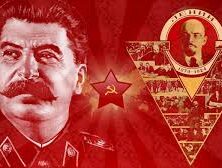The University of Limerick’s Regional Writing Centre is holding its fourth annual national essay-writing competition for 4th, 5th and 6th-year pupils. What’s required is an 800-1000 word essay on the following: “Despite her youth, Malala Youssafzai has already fought for several years for the right of girls to education, and has shown by example that children and young people, too, can contribute to improving their own situations.” In response, one must make reference to the role that young people play in Irish society today. Deadline for entries is Friday, February 27th 2015. Prizes will be announced on Tuesday, 27th May, 2015. For further information, go to...
Carl Gustaf Mannerheim by Daniel Dilworth...
posted by Cloud
Carl Gustaf Mannerheim was a Finnish national hero, and is credited with saving Finland from the USSR during the Winter War. This wasn’t the first war the USSR had managed to screw up; in the years immediately after the October Revolution they fought Poland. Poland at the time was led by the dictator Pilsudski. Pilsudski became the most powerful Pole since before the Polish-Lithuanian Commonwealth was partitioned in 1795 between Russia, Prussia and Austria. The imperial capital of Austria was Vienna, a city known for its role in the history of music. It was here where Mozart finished his life. His life, however, was more successful in his home city of Salzburg, a city on the Austrian-German border. Germany borders a total of nine countries, including France and the Netherlands. These two nations share a land border as well, short as it is, on the island of Saint Martin in the Caribbean Sea. The islands of the Caribbean have all at one time or the other been ruled by a European country, and this includes part of the Virgin Islands. Though now ruled by the US, they were purchased by the emerging superpower from the unsuspecting kingdom of Denmark. Denmark is a Scandinavian country, and its history is closely intertwined with that of Norway and Sweden. Sweden was once considered a European superpower, though this was back in the sixteenth and seventeenth centuries. Its legacy can be primarily observed by looking at the Åland Islands. These are Swedish-speaking islands in the Gulf of Bothnia. However, after the First World War they were forcibly given to a newly-independent Finland, who in her infant years of statehood, which also involved a bloody civil war, was led by the field marshal Carl Gustaf...
Achievements of the USSR by Graham Ó hArrachtáin...
posted by Cloud
The Soviet Union achieved more in its first few decades than any other nation could ever even dream of replicating. The USSR originated in the baptism of fire that was the October Socialist Revolution. In this revolution, the exploited working class took state power and began administering the Dictatorship of the Proletariat under the leadership and guidance of the Bolshevik Party. The revolutionaries faced vociferous opposition from the dispossessed landowners and big bourgoisie and their supporters. Not to be out done by their Russian allies,16 countries such as the USA, Canada, Japan and Britain sent an expeditionary force to help the White Russians. The Bolsheviks successfully marshalled the support of the masses and the Red Army crushed the counter-revolutionaries. The young USSR achieved much in women’s emancipation. Women were given a right to vote, a right to education and the pay gap between men and women was abolished. Day care centres and créches were set up and provided to women to allow them to work without worrying about their children’s welfare. Women were also allowed play an equal part in the Red Army and in the protection of their country. The 5-year plans created a new era of industrial progress with industry growing by over 800% from Tsarist times during the first two 5-year plans. All this occurred at the same time the Capitalist countries were enduring the Great Depression! Magnificent feats of Socialist construction such as the Stalingrad grain factory and the industrial city of steel, Magnitogorsk showed the benefits of a planned economy. The Bolsheviks believed in cheap and effective transport for all citizens, with the construction of the Moscow Metro in 1931. Socialist architecture dominated the cities with beautiful buildings such as the Red Army Theatre, made in the shape of...



